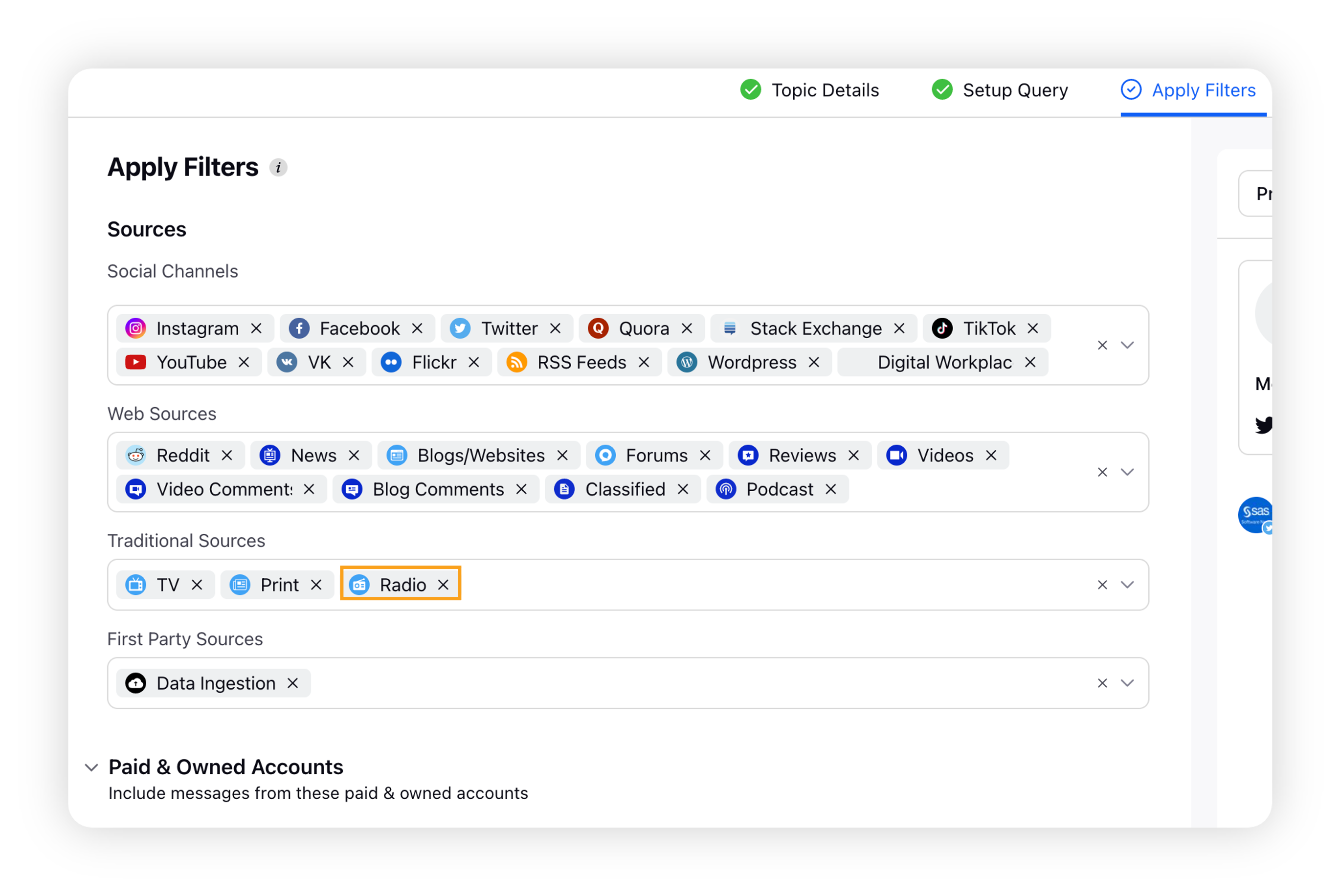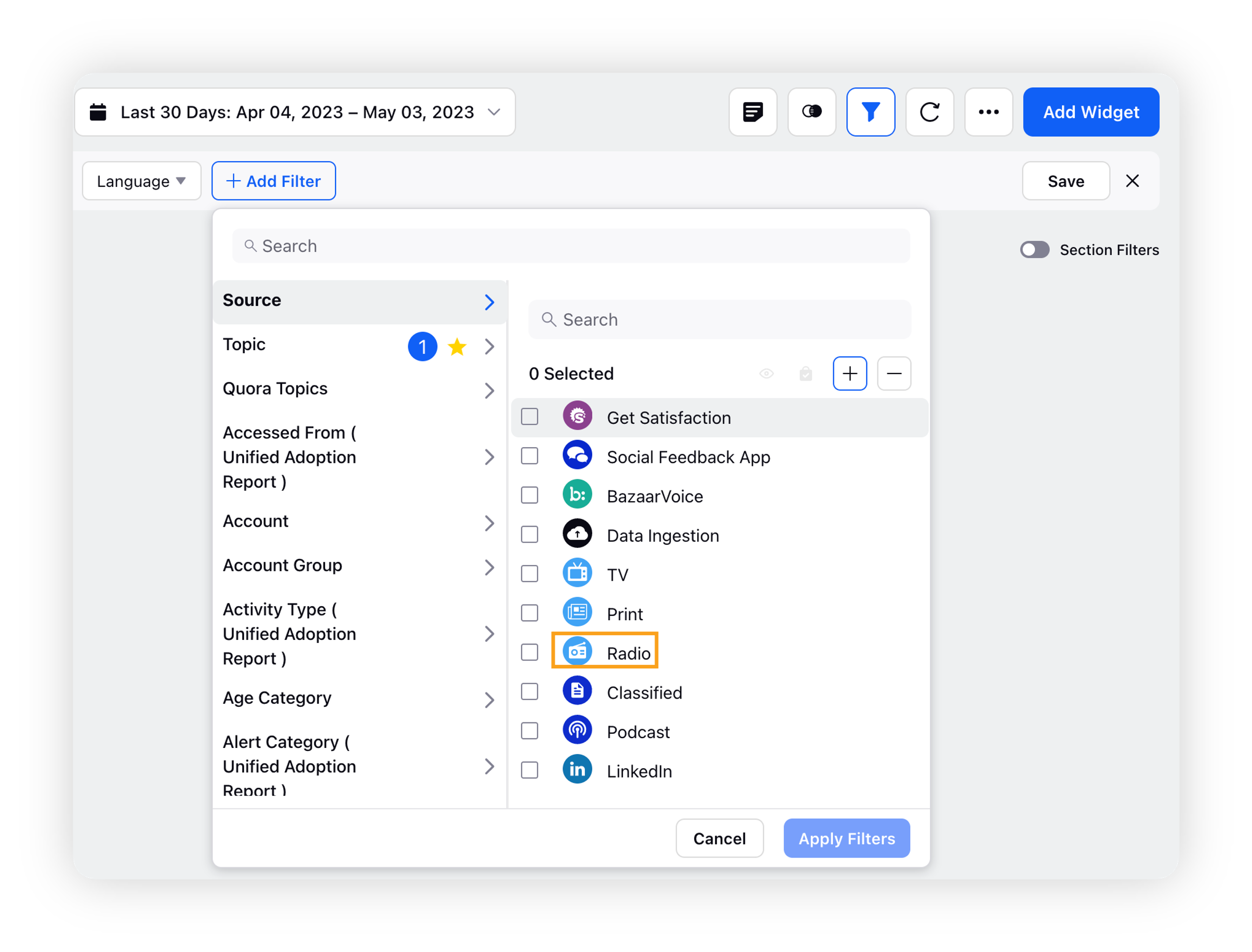Radio as a Listening source
Updated
By adding Radio as a Listening source, you can listen to and learn from radio channels.
Sprinklr supports Radio as one of its traditional Listening sources. Radio source contains radio broadcasts of news or commentaries on various topics. LexisNexis provides a transcript and audio clips of major Radio sources for popular radio stations.
Sprinklr has coverage of –
550+ US Radio stations
110+ Radio channels in Canada, including CBC, CRadio, City, and Global affiliate stations
60+ Radio channels in the UK, including BBC Radio, iRadio, and Sky content
Publicity Values related to radio clips
Capability: Transcripts for Radio are available as a part of the metadata.
Radio source capabilities
Source: Radio
Source of data: Datavendors (LexisNexis)
Coverage: Sprinklr includes Radio transcripts and audio clips of 750+ major radio sources across US, UK, and Canada.
Latency: Less than 60 mins
Historical data: Q3 2017
Backfill support: Yes
Archive support: Up to 2 Years
Author/ Profile metadata details: Yes (earned)
Author name available
Note: Author URL is not available for Radio Sources, hence distinct users cannot be determined accurately.
AI-enriched data: Sentiment, Emotions, Language, Gender, Word cloud, Topic Cluster, Smart Themes Clustering, Smart Insights
Message type: Radio News
Media type: Radio & Video (consists of audio clips)
Radio data entities in Social Listening
Radio specific Data Entities
Data Entities | Type | Description |
EMV | Metric | EMV stands for Earned Media Value. EMV is dependent on four factors namely –
If any of the above is not available for a particular domain, the value is estimated as zero. |
Media Source Category | Dimension | Describes the type of publication an article is from e.g., National, Local, etc. |
Media Title | Dimension | Title of the message like web news/blog, print or Radio |
Editorial Rank | Dimension | Ranking of the media source based on its presence such as International, National, etc. The scale of ranking is from 1 to 5. Refer to this KP article for more information. |
Radio supported location stats
Data Entities | Type | Description |
Country | Metric | The user-provided or Sprinklr-identified country of origin of the message |
State | Metric | The user-provided or Sprinklr-identified state of origin of the message. |
To fetch data from Radio
In order to fetch data from Radio, you need to create a topic with Radio as its source.
While creating or editing your topic, click the Apply Filters tab, and select Radio in the Traditional Sources.

You can also select Source: Radio from the dashboard/widget filter.

To learn in detail about how to create a Topic, refer to Create a Topic in Topic Creation UI.
Limitations
Radio as a source does not fall under the Source verification process as this is controlled by the data vendor. The coverage list is a part of a package that is defined by the data vendor, and is updated once a year.
To backfill data from Radio
Once the Topic is created/ updated, you can backfill the Topic going far back to Quarter 3 of 2017. To know more about how to backfill data, refer to Listening Backfill for Topics.